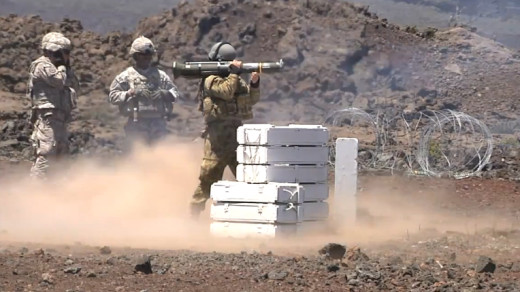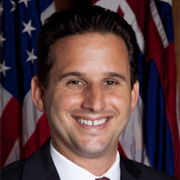$29 million project will support the live-fire collective training needs of the Army, Army Reserve, and Hawaii Army National Guard units. The funds were authorized by Congress for 2013.
Along with the U.S. Army’s published record of decision came a news release:
| To comply with the National Environmental Policy Act, the Army prepared an environmental impact statement that evaluated the potential environmental and socioeconomic effects associated with alternatives to construct and operate the IPBC. In the Final EIS (published in the Federal Register April 26, 2013), the Army presented analysis for two alternative locations: Alternative 1 the Western Range Area, and Alternative 2 Charlie Circle. The Army identified the Western Range as the preferred and selected alternative. The Western Range is in an under-used portion of the PTA impact area where no ranges currently exist. The location has already been exposed to indirect munitions fire, and constructing the battle course here would reclaim a portion of the impact area. |
In a different media release, U.S. Senator Brian Schatz was quick to offer positive comments on the news:
Big Island Video News reviewed the EIS earlier this year. The EIS considered eight different locations at Pohakuloa as alternative actions. This map shows where they are.

Figure 2.4-1. Eight alternative IPBC sites considered at PTA
The Army named the Western Range Area Alternative (blue, below) as the preferred location for the IPBC, and also named the Charlie Circle Alternative (purple, below) as viable. “The IPBC would be built similarly at either of these locations as discussed above,” the document states. “Under these alternatives no new impact area would be required. No expansion of PTA’s boundaries would be necessary to accomplish the Proposed Action.”

Figure 2.7-1. IPBC Western Range Area and Charlie Circle Alternatives
According to the Army:
| This location was selected because this site better supports operational needs than the other alternatives. This alternative works best for dismounted infantry operations because it allows realistic scenarios, similar to what Soldiers are expected to encounter in combat operations overseas, and therefore provides the greatest training benefit. The ground is also primarily comprised of ‘a‘ā lava, which is much more susceptible to softening, and construction can occur at a much lower cost than the pāhoehoe lava found at Charlie Circle. In addition, this alternative would result in fewer impacts on cultural and natural resources than the Charlie Circle location. Cultural resources and listed plant species surveys were conducted and, though both were found to be present on the proposed range area, impacts to these resources can be avoided or mitigated. |
The release describes some of the activity that will be carried out at the new training spot:
| The battle course allows the Army to train and test infantry platoons and other units in the same way they would fight, as a group. The skills necessary to detect, identify, engage and defeat stationary and moving infantry and armor threats will be trained and tested in this course. Soldiers would fight the threats with small arms, machine guns, and other weapon systems as part of live-fire training exercises. This battle course allows Soldiers maneuvering on the ground to practice coordinating air support. In addition to live-fire, the range would also be used for training with subcaliber and/or laser training devices. This type of training is essential for Soldiers to be prepared for the threats they will encounter during combat operations overseas. |
The Army readily admits that there “could be significant impacts could occur to cultural resources.” The Army’s analysis showed potential environmental impacts to “air quality, threatened and endangered species, cultural sites, encountering munitions and explosives of concern, and igniting wildfires”.
As far as Depleted Uranium concerns go, the EIS states that the activities proposed at the location will not affect the areas where DU is located.
The Army has a plan for the impacts that will occur:
| To lessen or eliminate impacts to cultural resources, the Army entered into a programmatic agreement with the Advisory Council for Historic Preservation and Hawai‘i State History Preservation Office, in compliance with Section 106 of the National Historic Preservation Act. The agreement contains detailed actions the Army will take to reduce potential adverse effects to cultural resources. For example, U.S. Army Garrison-Pōhakuloa Cultural Resources staff is working with the construction design team to make sure cultural resources are avoided where possible. They will also develop educational and awareness materials for the construction crew and install other protection measures at the site to ensure resources are avoided.
The U.S. Fish and Wildlife Service issued a biological opinion, Jan. 11, (in accordance with Section 7 of the Endangered Species Act) for the construction and operation of the battle course. The opinion contains various actions the Army will take during the construction and operation of the battle course to reduce the overall impacts on natural resources. For example, the biological opinion contains measures required to protect the Hawaiian goose (nēnē). The Army will implement these measures throughout the entire Pōhakuloa Training Area. |
The Army says requests to obtain a copy of the ROD may be emailed to USARMY.JBSA.AEC.MBX@mail.mil or contact the U.S. Army Environmental Command Public Affairs Office at their toll free number, 1-855-846-3940. An electronic copy of the ROD and Final EIS is available on the project website: http://www.garrison.hawaii.army.mil/pta_peis/default.htm



by Big Island Video News12:00 pm
on at
STORY SUMMARY
POHAKULOA, Hawaii – The U.S. Army will go ahead with the construction of a modern Infantry Platoon Battle Course and associated at Pōhakuloa Training Area, according to Hawaii’s U.S. Army Garrison Public Affairs Office. $29 million project will support the live-fire collective training needs of the Army, Army Reserve, and Hawaii Army National Guard units. […]